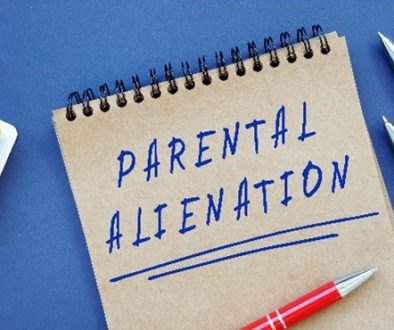Frozen Embryos: The Law at a Crossroads
 There are over 6 million children in the world born as a result of In Vitro Fertilization (IVF). There are also an estimated 800,000 frozen embryos. Created (most usually) from an infertile couple’s gametic (genetic) material, the right to these embryos often becomes hotly contested during divorce.
There are over 6 million children in the world born as a result of In Vitro Fertilization (IVF). There are also an estimated 800,000 frozen embryos. Created (most usually) from an infertile couple’s gametic (genetic) material, the right to these embryos often becomes hotly contested during divorce.
IVF creates a viable embryo that can be directly implanted or frozen for future use. The technology was first used in the 1980s but, to date, there is no clear legal consensus as to whether the embryos are “humans in vitro”, property to be distributed, or something in between. There is no federal statute addressing their status and decisions reached by the courts and legislatures have varied from state to state. What is ultimately decided on their status will have wide-ranging implications, including potentially impacting stem cell research, abortion and even the availability of some forms of birth control.
Since the earliest cases, there has more or less been a consensus that the progenitors at the time of fertilization have the right to determine what will become of their embryos at the time of fertilization and that the right to not procreate generally trumps the right to procreate. All that may be changing.
Background and Precedent
Davis v Davis, 842S.W.2nd 588 (Tenn.) was an early frozen embryo divorce case. The wife wanted to donate the embryos to another couple for implantation; the husband wanted the embryos destroyed. The case went to the Tennessee Supreme Court who, in their findings, established precedent for many of the issues raised in other frozen embryo cases across the country.
The Tennessee Supreme Court resolved the issue of personhood under state law by stating that pre-embryos are neither persons nor property but rather belong to an “interim category that entitles them to special respect because of their potential for human life” Id. at 58.
The court further held that:
-the first resource for determining the fate of frozen embryos should be an agreement between the parties and that this agreement should be presumed valid. The progenitors should retain decision-making authority as to the embryos’ disposition.
-absent the existence of an enforceable agreement, the constitutional right to privacy prevents undue state interference with the right to have children. The Davis court further held that the right to privacy also protects the right of an individual to choose not to have children.
-when two rights of equal significance (the right to procreate and the right to avoid procreation) are pitted against each other, a balance of interests approach should be used. The court, in this instance, found that the husband’s right not to have children should prevail over the wife’s wish to donate. But Davis also stipulated:
“Ordinarily, the party wishing to avoid procreation should prevail, assuming that the other party has a reasonable possibility of achieving parenthood by means other than use of the [embryos] in question. If no other reasonable alternatives exist, then the argument in favor of using the [embryos] to achieve pregnancy should be considered.” Id, at 604
Most courts have agreed with the Tennessee court on all counts, including tending to give more weight to the right not to become a parent. Terrell v Torres, 2020 Ariz. Lexis 26, 2020 WL 370239, the most recent frozen embryo case, put the law to the test, highlighting the problems seemingly inherent to agreements between the progenitors and, due to the highly emotional nature of the case, moving the Arizona state legislature to take unprecedented action on the subject.
Torres v Terrell Case Overview
At thirty-five and single, attorney Ruby Torres faced every woman’s nightmare: she was diagnosed with an aggressive form of breast cancer. She needed a double mastectomy, radiation, and chemotherapy. Her doctors told her the treatments would greatly diminish her fertility. Wanting to preserve her future ability to bear a biological child, Torres asked her then-boyfriend, John Terrell, if he would donate sperm for frozen embryos. At first, he declined, but when Torres’ ex-boyfriend said he would help, Terrell changed his mind. Torres went through fertility treatments and, with Terrell’s help, 7 embryos were created and frozen.
Things moved quickly on the relationship front after that: Torres and Terrell were married four days after the treatment. (Terrell later claimed this was so Torres would be covered by his health insurance). Torres underwent cancer treatment and all went well until two years later. When Torres discovered Terrell was having an affair, they decided to divorce. Torres requested guardianship of the embryos as part of the divorce settlement. Terrell wanted the embryos donated to another couple.
Torres and Terrell had signed an agreement before creation of the embryos. But like many agreements signed at the time of fertilization, it was problematic. Three courts, the trial court in the case, an Arizona court of appeals and the Arizona Supreme Court, all came to different conclusions as to the meaning of the agreement.
All the courts agreed the agreement should be the point of departure for their findings and that Torres and Terrell had indicated in the agreement that the embryos should not be destroyed. The trial court found the agreement to be indeterminant as to which spouse should be awarded the embryos and took a balance of interests approach. Determining that Torres maintained the possibility (estimated at 1% according to court documents) of procreating without the use of the embryos, the court found that Terrell’s interest in not being a parent outweighed Torre’s claim to the embryos and directed the IVF clinic to donate the embryos to another couple.
The court of appeals disagreed. The appeals court read the contract as providing consent for a court to decide who should receive the embryos and additionally found that the trial court had not correctly balanced the interests of the parties. They cited exceptions to Davis, including Szafranski v. Dunston, 39 NE 3d 1012 – 2015 (Il.) and Reber v. Reiss, 42 A.3d 1131 – 2012 (Pa.). These cases both involved women who had undergone cancer treatment and would be unable to bear a biological child without the frozen embryos. They concluded:
“The trial court erred by improperly concluding Torres’ “less than one percent” chance of becoming pregnant through normal means and the remote possibility of adoption or insemination with a donor embryo negated her claims to these embryos. The trial court overstated Torres’ ability to become a parent through means other than the use of the disputed embryos. Moreover, the court gave insufficient weight to Torres’ desire to have a biologically-related child—which was the entire purpose of engaging in IVF in the first place.” Terrell v Torres, 246 Ariz. 312 ¶47 (App. 2019)
The appeals court awarded the embryos to Torres.
And finally, the Arizona Supreme Court reviewed the case and had yet again another interpretation of the agreement, finding that the contract did indeed cover the disposition of the embryos in the event of divorce. The Supreme Court expanded its review of the contract from the specific section where a choice had been checked to the context provided elsewhere in the contract. The judges concluded that the contract was clear that the parties chose to donate the embryos, absent a contemporaneous agreement for use by one of them. Since Torres and Terrell were not currently in agreement, they affirmed the trial court’s decision that the embryos should be donated, albeit reaching that decision based on contract law rather than a balance of interests.
All three courts in the case based their decisions on the agreement signed between Torres and Terrell at the time of the fertility treatments. Although all three interpreted the agreement differently, that an agreement should be honored was not questioned. That may not continue to be the case.
Legislative Action
After the trial court in the Torres case awarded custody of the embryos to Terrell, the Arizona state legislature stepped in. The legislature was outraged that Torres could not bear her own baby – but a stranger could. The statute, A.R.S. § 25-318.03 a.k.a. the Embryo Statute, went into effect in August 2018. It states that Arizona judges must award embryos to the spouse that will give them the best chance for the in vitro human embryos to develop to birth. It prohibits judges from considering any prior agreement between the parties. Under this statute, the disposition of a couple’s embryos is no longer under the control of its progenitors. The statute’s proponents argue the decision to procreate takes place at the time of the creation of the embryo, not at its implantation, making the courts’ arguments concerning the right not to procreate moot after the fact.
Arizona’s stature is by far the most far-reaching, but other state legislatures, including New Mexico’s, have introduced restrictions on how frozen embryos must be treated. These restrictions are strongly contested, with the sides forming from traditional allies: on one side, religious organizations and conservative politicians, on the other, Planned Parenthood, the ACLU and the IVF medical community. Until this is finally decided, couples cannot be assured that they will retain the right to decide what becomes of their embryos once they’ve been created.
The Arizona statute was not retroactive so it was not mandatory that the court of Appeals or the Arizona Supreme Court take the statute into consideration. They did not and the Supreme Court’s decision in Torres stands.



